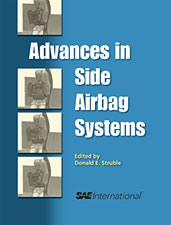Technical Paper
A Perspective on Side Impact Occupant Crash Protection
1990-02-01
900373
The NHTSA notices of proposed rulemaking on side impact protection have focused worldwide attention on one of the most difficult and frustrating efforts in automobile crash safety. Traditional vehicle design has evolved obvious structural contrasts between the side of the struck vehicle and the front of the striking vehicle. Protection of near-side occupants from intruding door structure is a most perplexing engineering challenge. Much useful and insightful engineering work has been done in conjunction with NHTSA's proposed rulemaking. However, there are many major engineering issues which demand further definition before reasonable side impact rulemaking test criteria can be finalized. This paper reviews recent findings which characterize the human factors, biomechanics, and occupant position envelope of the typical side impact crash victim.

